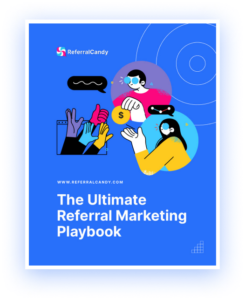Loyalty programs aren’t anything new. They’ve been around for literally hundreds of years.
And they remain popular — the average household participates in at least 14 loyalty programs.
Tactics for building customer loyalty have changed over time, but there are glimpses of the past even in today’s modern reward programs.
So let’s take a look at how loyalty programs have evolved over time and what they might look like in the future.
The History and Origin of Loyalty Programs
It’s a hotly debated subject among history buffs and reward program fanatics.
You know, whether or not Ancient Egypt’s commodity tokens represent the first real loyalty program — or just the currency of the times.
Beer and bread tokens. They were plastered, painted wood shaped like a jug of beer or a loaf of bread. And they were doled out to citizens, workers, and slaves for labor and temple time.
There’s no real “loyalty” aspect there.
But there was a “bonus” component in that extra tokens were handed out according to one’s place in the societal hierarchy. Depending on who you were, you could exchange tokens for things other than beer and bread.
Sort of like a “tiered” system, I suppose. But not really a loyalty program.
Click to Jump
Through the Ages: 17 Examples of Loyalty Program Through History
Now that we’ve settled that, let’s explore where loyalty programs got their start and how they’ve evolved over time.
What was the first loyalty program?
Copper Tokens! What most would consider the first real loyalty program dates back to the early 1700s.
Retailers gave customers copper tokens that could be redeemed for future purchases, like the tokens below that could be applied toward a future purchase at Conder’s Drapery Warehouse.

Copper tokens fulfilled the most basic tenet of customer loyalty programs: incentivizing customers to return to a business.
The problem was they became too expensive and proprietors were forced to come up with alternatives.
Trade Marks
B.T. Babbitt’s Trade Marks
American businessman, Benjamin T. Babbitt, made a fortune manufacturing Babbitt’s Best Soap. But he’s perhaps better known for the revolutionary marketing tactics he used to keep his customers coming back for more.
He introduced the concept of using “trade marks,” which could be cut from the wrappers of his products and exchanged for a variety of items listed in the company’s Catalog of Mailable Premiums. These were literal marks that served as proof of purchase (or trade), and led to the concept of trademarks (but that’s a different article).
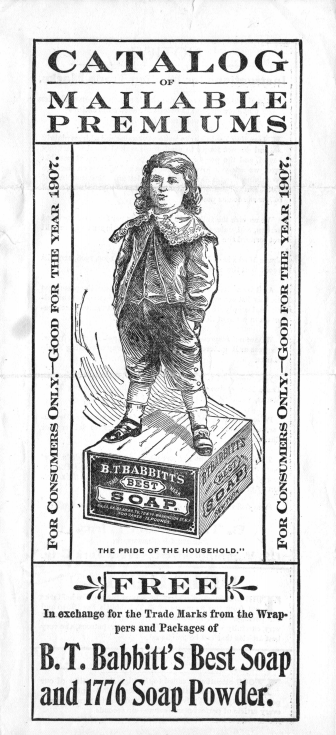
Here’s a few examples of “premiums” available at the time.
- Gentleman’s hemstitched handkerchief, ½ inch hem: 25 trade marks
- Lady’s white lawn apron, 36 inches wide: 75 trade marks
- Pair of muslin window curtains: 200 trade marks
- Gentleman’s outseam walking gloves: 275 trade marks
You can see the clear influence on later loyalty programs – earning a handkerchief as a reward after purchasing 25 items. The program was so successful that he expanded the concept to include brick and mortar premium redemption stores.
Tickets and Checks
Grand Union Tea Company
Instead of having customers clip trade marks, The Grand Union Tea Company issued tickets at the time of purchase, redeemable for products from their own Catalog of Premiums.
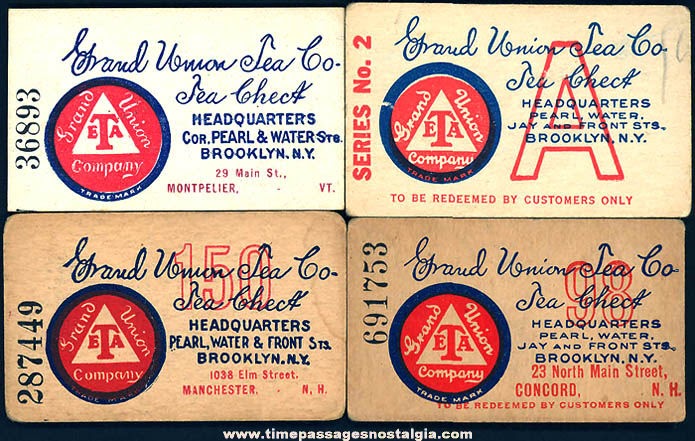
The company positioned the tickets as special “presents,” their way of giving customers a share of the profits of the business.
Stamps and Boxtops
S&H Stamps
Companies started offering physical “stamps” to reward loyal customers in the 1890s.
Customers could stick the stamps into collection books, where they’d be safe and secure. You’d keep track of your count until you met the redemption requirement for a product you’d select from a catalog of premiums.
Sounds fun, right?
It’s like an old-school form of gamification. And it became extremely popular.
The Sperry & Hutchinson Company ran with the concept and adopted a coalition loyalty program as their business model.
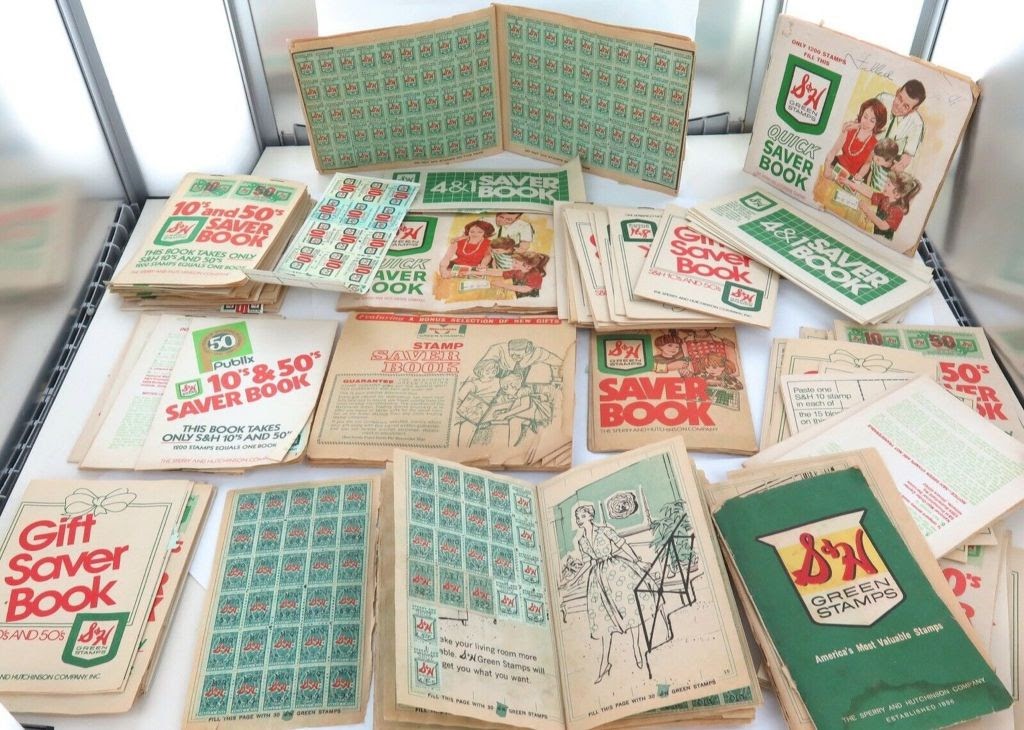
They began selling their Green Stamps to other merchants to offer to their customers — the first to offer loyalty as a service.
Customers collected trading stamps from every purchase and pasted them into booklets issued by S&H. They could order through the catalog or exchange them at one of the Green Stamps retail stores for instant gratification.
Ovaltine: Proof of Purchase
Of course, you could buy stuff for kids with your Green Stamps, but brands took steps to build loyalty among younger audiences too.
Take those Ovaltine-sponsored radio show promotions during the depression era. Consumers could mail in proofs-of-purchase to obtain branded radio premiums, items like coffee mugs, badges, pins, etc.
Sure, the promise of a special “reward” made kids’ drink a lot of Ovaltine, but as far as long-term loyalty?
Maybe.
Did Ralphie remain a loyal Ovaltine drinker when he deciphered the secret message from his Little Orphan Annie Decoder Pin?

Betty Crocker Coupons
In 1921, Gold Medal flour introduced Betty Crocker to answer homemakers’ burning questions about baking and cooking.
The persona became incredibly popular on radio programs and in print.
Soon, General Mills built an entire brand around her, and later, an iconic loyalty program. It began with customers sending in cash along with their coupons to purchase complete sets of flatware piece by piece. The coupons
Later the company began printing Betty Crocker Coupons on the outside of product boxes which could be redeemed — again, with a bit of cash — for Betty-approved housewares listed in the Betty Crocker Coupon Catalog.
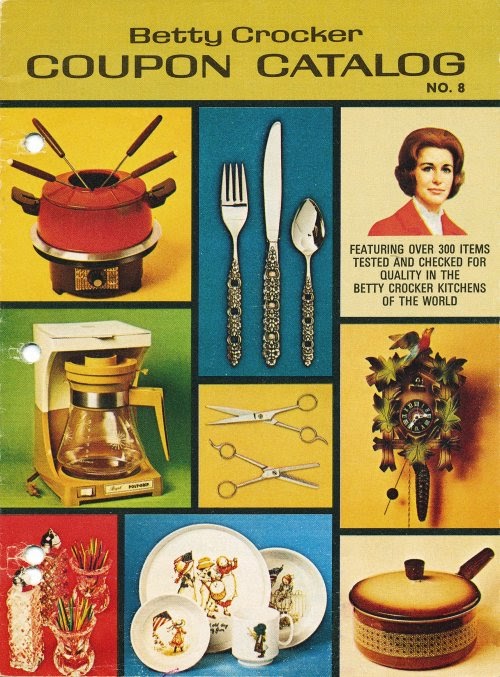
The loyalty program was unique for two reasons: its 75-year longevity and how deeply it connected the Betty Crocker brand with their customers – and also connected customers with each other, too. Grandmothers and mothers purchased items not just for themselves, but they amassed kitchen necessities for their daughters and granddaughters, one piece at a time.
Miles, Points, and Memberships
As consumer shopping habits changed, programs based on exchanging stamps and coupons for merchandise fell out of favor. They were also dang expensive to maintain.
Other kinds of loyalty programs began to emerge, and they continue today.
American Airlines Miles
In 1981, American Airlines kicked off the first frequent flier program with their wildly popular AAdvantage program, ushering in an era of intense competition for customer loyalty.

What started as a program to earn miles for upgrades, free flights, and other perks, became a program that provides over 1,000 other ways to earn miles through their extensive network of partners.
Discover Cash-Back Rewards
While other credit cards focused on building loyalty by providing premium services and perks for a hefty annual fee, Discover Card chose a different route.
It offered customers cold, hard cash as a reward instead — with no annual fee.
It’s a loyalty program model that’s served them well, and they’ve stuck with it while other brands moved on to other tactics.
No wonder Discover consistently ranks #1 in customer loyalty.
Retail Loyalty Cards
UK grocery giant, Tesco, was the first to introduce a free loyalty card for exclusive discounts on certain store products.
A year later, Tesco Clubcard members were spending 28% more at Tescos and 16% less in rival Sainsbury’s. Of course, it didn’t take long for Sainsbury’s and other retailers to follow suit.
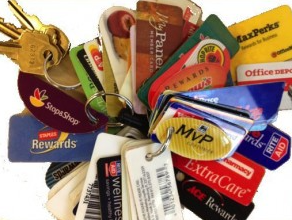
Loyalty cards became so ubiquitous that brands had to get creative with point programs and other incentives to entice customers to choose their business instead of a competitor.
Costco Executive Members Program
The 80s introduced a new business model: the wholesale club.
Members paid an annual fee for access to gigantic warehouses bursting with items in bulk quantities, plus certain services too.
If smokin’ deals on toilet paper and roasted chicken wasn’t enough to earn your undying loyalty, Costco started offering additional rewards through their Executive Members Program.
Membership is 2x more, but customers earn 2% cashback (up to $1000) awarded annually.
It’s an added incentive to foster even more loyalty — and keep you out of Walmart, Target, gas stations…pretty much every other retailer.
Modern Era
Most brands have shifted to mobile-based loyalty programs. Not only does it support eCommerce, but it gives access to their customers’ email addresses and spending patterns.
And it allows them to provide their tech-savvy customers with more than just points and discounts.
Here are some highlights of today’s innovations in customer loyalty.
Blockchain Loyalty
Blockchain-based loyalty programs could become the disrupter in the customer loyalty space.
It leverages modern technology to connect different loyalty programs across brands to form a single loyalty network with a shared currency.
For consumers, it could mean the end of juggling numerous loyalty programs. And it would ease the cost and operational burdens of managing rewards programs.
Amex started piloting the technology to enhance its own partner loyalty program a couple of years ago.
There hasn’t been any news since.
Crypto Reward Credit Cards
Instead of rewarding customers with points, cash, or miles, crypto rewards credit cards award consumers with, you guessed it, cryptocurrencies.
And they still function like any other credit card in your wallet, just with a modern enhancement to attract and retain the savvier customers.
SoFi was the first to unveil crypto as a redemption option this past May.
BlockFi’s Bitcoin Rewards credit card will earn crypto as the default reward option. It debuts sometime this summer.
Mobile Rewards Programs
Starbucks Rewards sets the bar for mobile-based rewards programs, perfecting the platform while other brands were still mulling the possibilities.
Starbucks customers were already notoriously loyal, but the app may just solidify that bond forever.
From mobile ordering, multiple payments, free in-app music, and special bonuses, and more, it’s no wonder 22 million customers use the app.
Disloyalty Cards
In industries where a handful or fewer brands dominate, the “little guys” have had to get creative to build loyalty — or just to stay afloat.
Small, independent brands are banding together to combat monopolization with “disloyalty cards” to encourage shopping local.
They’re usually found in the coffee space and most certainly don’t include an option for Starbucks.
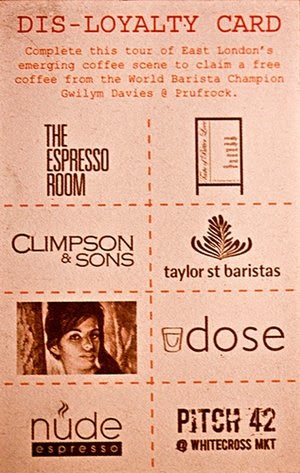
Country-wide Loyalty Programs
Loyalty programs aren’t just part of a particular brand strategy, an entire country has adopted one to attract “customers.”

The pandemic has devastated countries that rely heavily on tourism. To entice visitors back to their beautiful beaches — and those little luxury huts that hover over the water — the Maldives established a country-wide initiative called Maldives Border Miles.
It rewards visitors for the number and duration of stays, and as a perk of enrollment, fast-track immigration.
Digital Punchcards
Businesses are choosing apps like CandyBar to provide an easy-to-use digital loyalty program. It gives them the ability to stay connected with customers, keeping them informed about of news and specials, while rewarding them for purchases.
Rewards Cards Wallet
Apps like Apple Wallet, Stocard, and Key Ring allow you to consolidate all of your loyalty cards in one place, digitally of course. Most allow you to store all sorts of things like boarding passes, movie tickets, prepaid gift cards, grocery coupons — you name it.
Notice the continuing theme of consolidation? It extends beyond loyalty programs.
The Future of Customer Loyalty Programs
The future of loyalty cards will certainly encompass many aspects of modern era loyalty programs and no doubt there’s still room for innovation.
But brands that inject creativity into their programs and offer customers deeply personalized experiences will be rewarded with the most loyal customers.
If you’re interested in boosting your word-of-mouth marketing strategy, check out ReferralCandy and InfluencerCandy!


